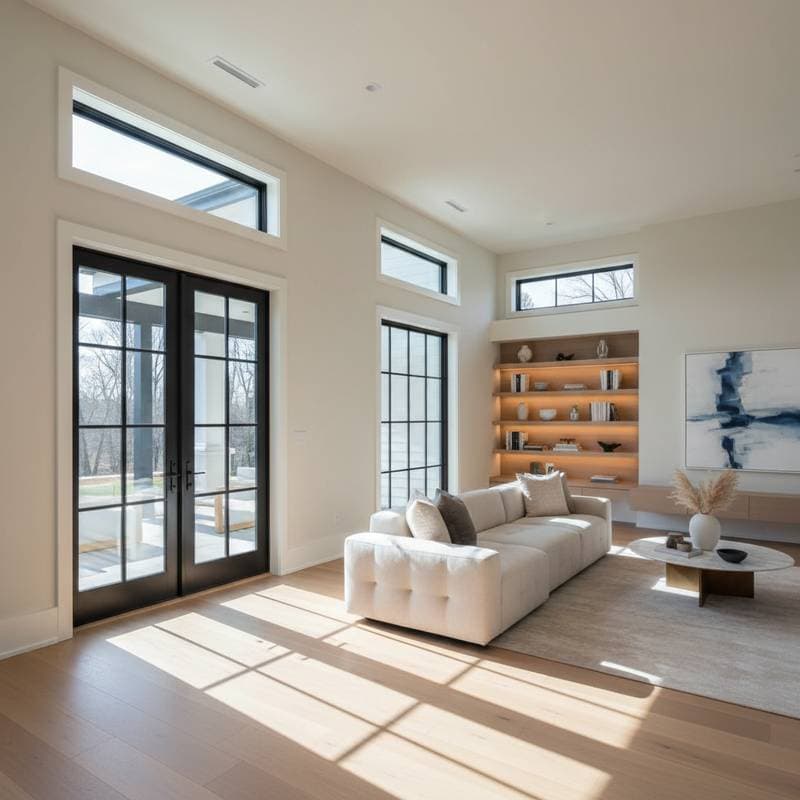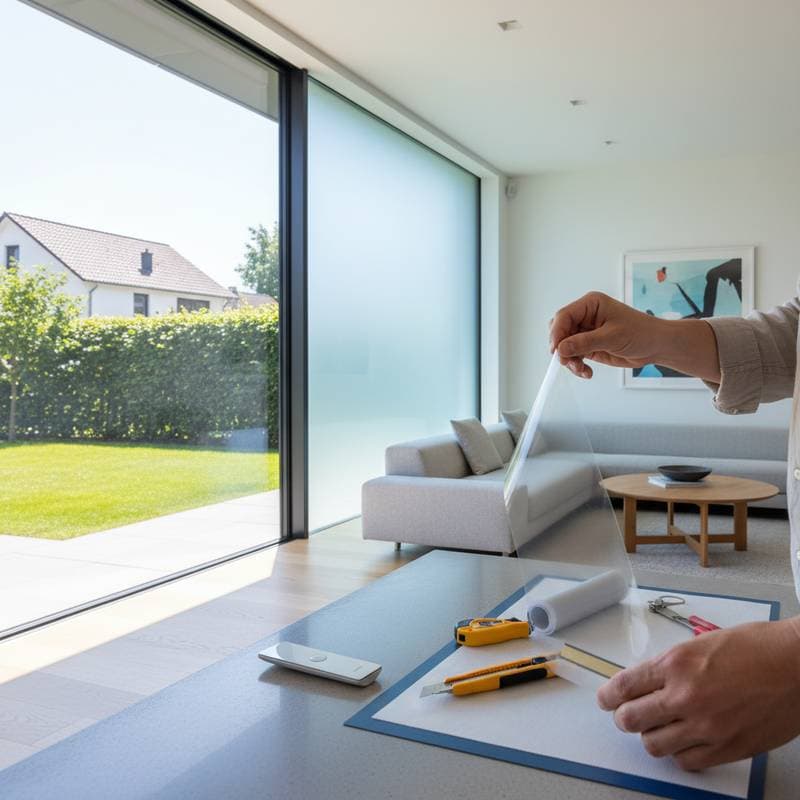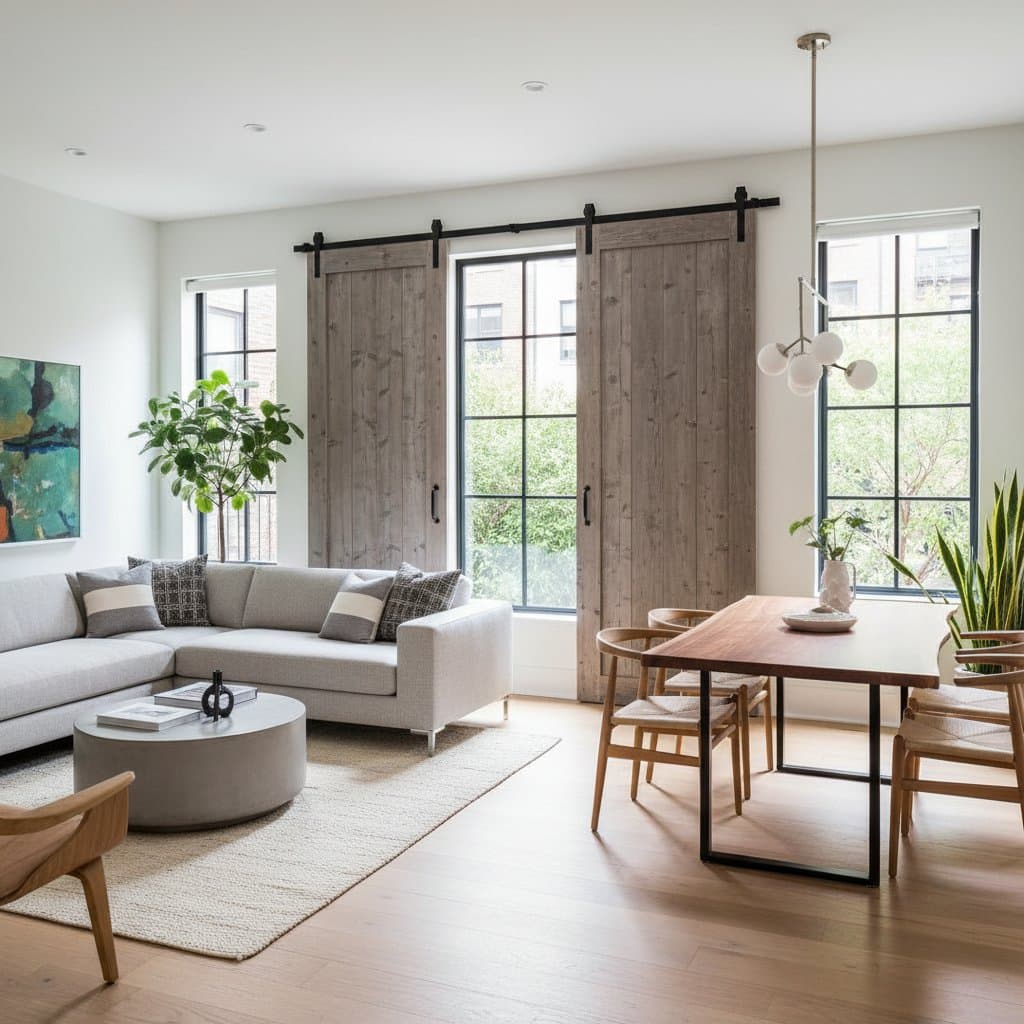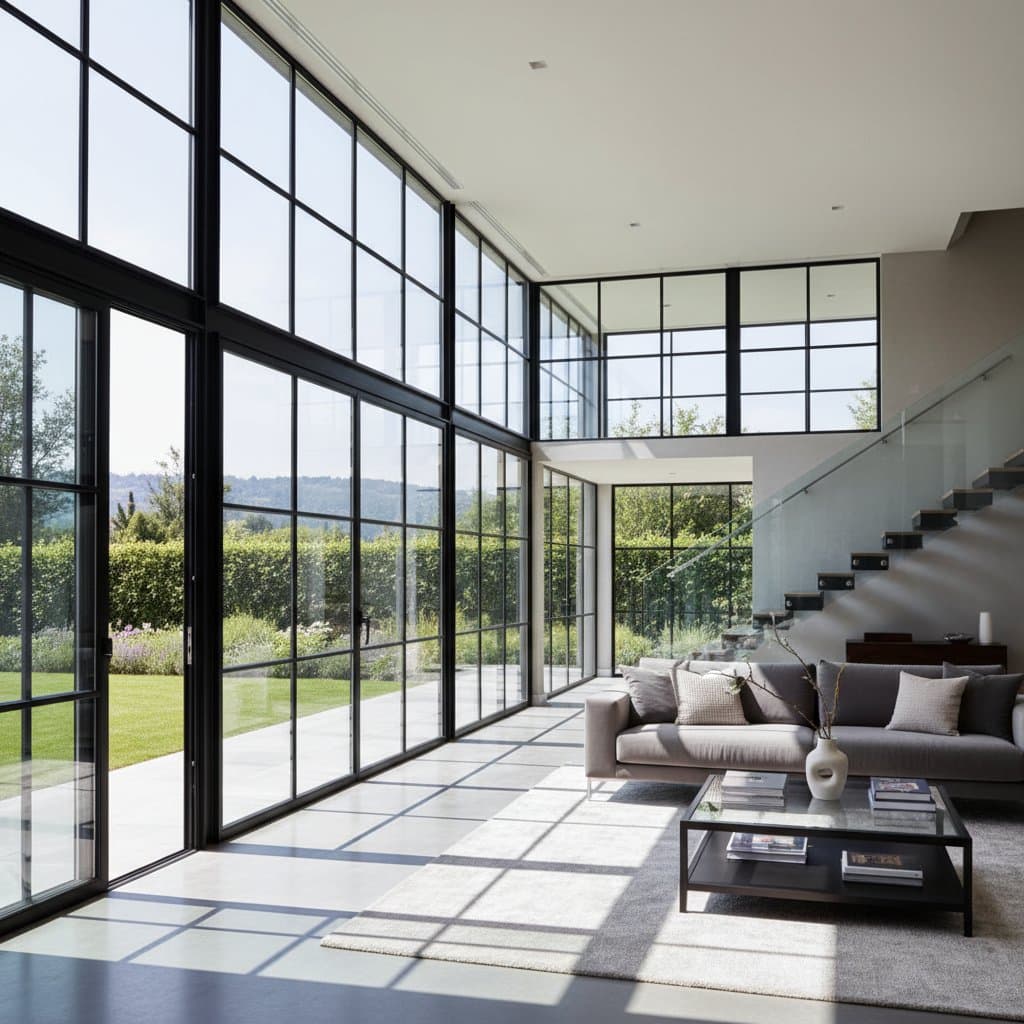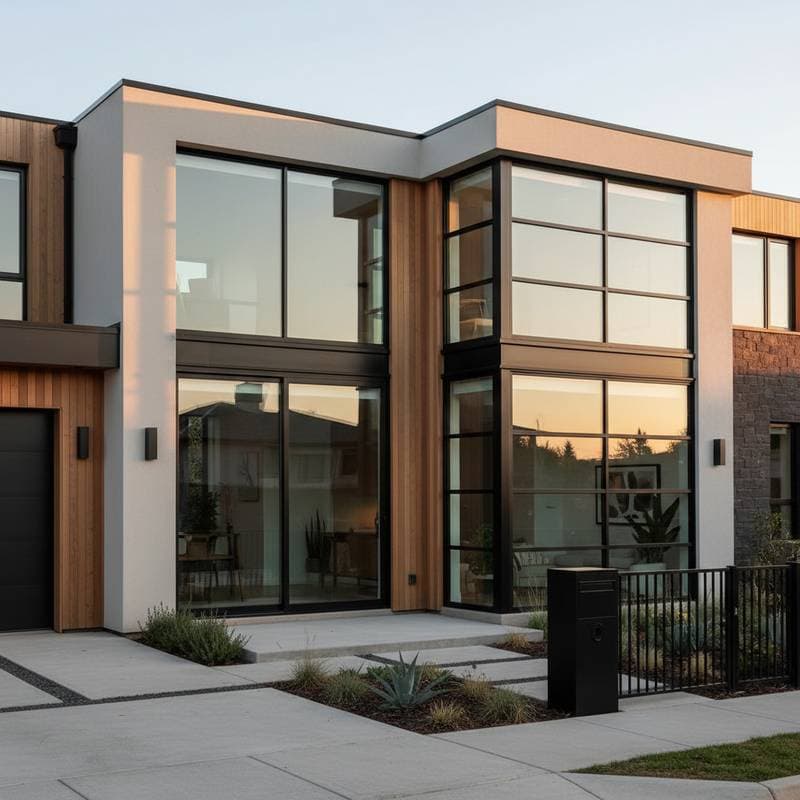Transom Windows: Enhancing Modern Homes with 30 Percent More Natural Light
Natural light ranks among the top priorities in contemporary residential architecture. It improves occupant well-being, cuts down on artificial illumination needs, and expands the perceived size of rooms. Transom windows emerge as a key solution, offering both practical light distribution and elegant visual interest. Positioned above doors or primary windows, these elements channel daylight effectively while preserving privacy and thermal comfort.
Defining Transom Windows
A transom window consists of a horizontal pane located above a door or larger window. In earlier eras, such features facilitated air circulation between rooms prior to widespread air conditioning use. Now, they primarily serve to amplify natural illumination and support seamless design flow across a residence. Available in fixed or operable configurations, transoms use frames of wood, vinyl, or metal, with shapes that align to surrounding architectural details.
Open-plan interiors dominate current trends, emphasizing fluid spatial connections. Transom windows equalize light exposure in transitional zones like hallways, which often lack direct exterior access. By permitting daylight to filter from brighter adjacent rooms, a well-placed transom can elevate overall brightness by nearly 30 percent relative to unenhanced spaces. This enhancement creates a more vibrant and welcoming atmosphere without major renovations.
Exploring Transom Window Varieties
Transom windows come in diverse styles to suit different functional and stylistic needs. Consider these primary categories:
- Fixed transoms: These stationary units ensure steady light passage without ventilation capabilities. They suit installations over interior doors where airflow remains unnecessary.
- Operable transoms: Hinged designs allow opening for cross-breezes and climate regulation. Such options appeal to renovations in historic properties or rooms requiring occasional airing.
- Decorative transoms: Options with stained, frosted, or patterned glass deliver artistic flair alongside illumination benefits.
- Custom transoms: Tailored to specific motifs, these may incorporate arches, curves, or intricate geometries for unique architectural statements.
Selection hinges on installation location and desired outcomes, ensuring alignment with broader home aesthetics.
Selecting Materials for Durability and Style
Material decisions influence transom performance, longevity, and integration with existing elements.
Wood frames convey organic warmth and pair naturally with solid interior doors in classic or artisan-inspired settings. Owners must plan for routine sealing or repainting to protect against wear.
Vinyl frames offer cost-effective, low-effort maintenance and resist moisture in humid zones like bathrooms. Custom finishes mimic wood textures, providing versatility without added upkeep.
Aluminum or steel frames deliver sleek, contemporary profiles that prioritize glass visibility. These metals endure harsh conditions but benefit from thermal barriers to optimize insulation.
Insulation and weatherproofing demand attention, particularly for exterior-facing transoms. Inadequate sealing invites drafts or moisture buildup, compromising efficiency and indoor quality.
Integrating Design and Practicality
Transom windows extend beyond light enhancement to shape spatial harmony. Strategic placement accentuates tall ceilings, guides sightlines, and promotes balanced proportions. Matching transoms over several doorways, for instance, unifies disparate rooms into a cohesive whole.
Compact residences gain immensely from this light-sharing technique in windowless areas such as corridors or utility spaces. Privacy-conscious individuals favor obscured glass types that diffuse light softly. This combination yields open yet secure environments tailored to modern living.
Weighing Benefits Against Challenges
Home upgrades involve careful evaluation of gains and limitations to inform decisions.
Key Benefits:
- Amplified natural light that uplifts daily mood and trims electricity expenses for lighting.
- Stylish versatility that adapts to contemporary or classic decor schemes.
- Expanded spatial perception through heightened ceilings and room linkages.
- Airflow potential in movable versions to refresh indoor environments.
Potential Drawbacks:
- Elevated upfront costs from bespoke sizing or structural adaptations.
- Risk of thermal inefficiencies without advanced glazing solutions.
- Access issues for cleaning elevated surfaces or maintaining finishes.
Early assessment of these elements guides realistic project planning and maximizes returns.
Step-by-Step Installation Guide
Retrofitting or incorporating transom windows follows a structured sequence to achieve seamless results.
- Site Evaluation: Professionals inspect the header area above doors for load-bearing capacity. Reinforcement may prove essential in load-altering scenarios.
- Customization Choices: Select dimensions, framing, and glazing to harmonize with home features.
- Site Preparation: Accurate measurements precede any header adjustments or rough openings.
- Unit Placement: Secure the transom, ensure level alignment, and apply sealants against leaks.5. Final Touches: Install trim, caulk edges, and finish surfaces to blend with surroundings.
New builds allow easier incorporation during initial framing stages. Existing structures necessitate precise coordination to uphold integrity and appearance.
Optimizing for Energy and Comfort
Transoms must balance light gains with thermal control to sustain home efficiency. Double-glazed or low-E coated panes minimize heat exchange while preserving views. In sunny regions, solar-control tints curb excessive brightness; cooler climates prioritize U-factor ratings for warmth retention.
Frame sealing prevents infiltration that could negate insulation advantages. Certified installers apply techniques like foam insulation and weatherstripping for airtight performance. This approach aligns transoms with whole-home energy strategies.
Upkeep Strategies for Lasting Performance
Routine care keeps transom windows performing optimally over time. Wipe glass surfaces inside and out with mild solutions to sustain transparency. Wood elements warrant refinishing cycles every five to seven years based on exposure.
For operable units, apply lubricant to mechanisms annually to avoid operational issues. Inspect perimeter seals quarterly for cracks, reapplying caulk as needed to block moisture. These practices extend service life to match primary fenestration components.
Harmonizing with Interior Doors
Transoms and doors form a foundational pairing for aesthetic unity. Coordinated finishes and profiles, such as shared wood grains or grille patterns, establish visual consistency. A paneled door beneath a clear transom, for example, merges seclusion with luminosity.
Minimalist designs favor slim or borderless frames to streamline sightlines. Ornate settings incorporate muntins or carvings to underscore detail. Proportional scaling relative to door and ceiling dimensions ensures balanced compositions.
Tailoring Choices to Your Home
Ideal transom selection reflects site-specific variables for optimal fit.
Assess overhead clearance to gauge feasible heights. Analyze daily light paths to predict illumination patterns. Opt for privacy glazing in visible placements. Align budget with premium features like impact-resistant glass.
Pairing transoms with adjacent elements, such as sidelite panels, amplifies entryway impact. Consult design software or sketches to preview integrations.
Preparing for a Successful Project
Engage contractors versed in fenestration and architecture for informed guidance. Demand visualizations like 3D renders to confirm scale and flow. Verify compatibility with utilities, avoiding conflicts with overhead installations.
During work, prioritize moisture barriers and insulation layers around openings. Post-installation reviews cover seal integrity and finish quality. These measures secure durable, high-performing additions.
Realizing Enduring Home Enhancements
Transom windows deliver sustained advantages in livability and efficiency. Reduced lighting demands translate to measurable utility savings over years. The resulting brighter, more connected interiors foster enhanced daily experiences and appeal to future buyers, solidifying investment value.

